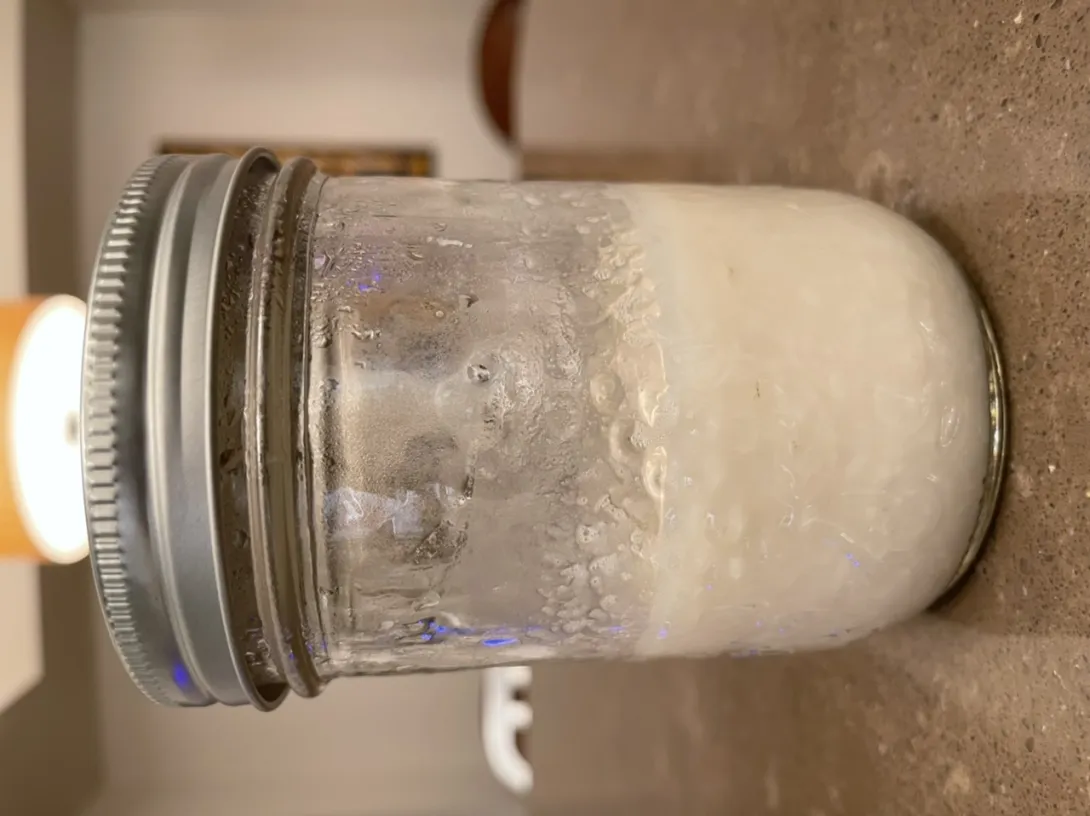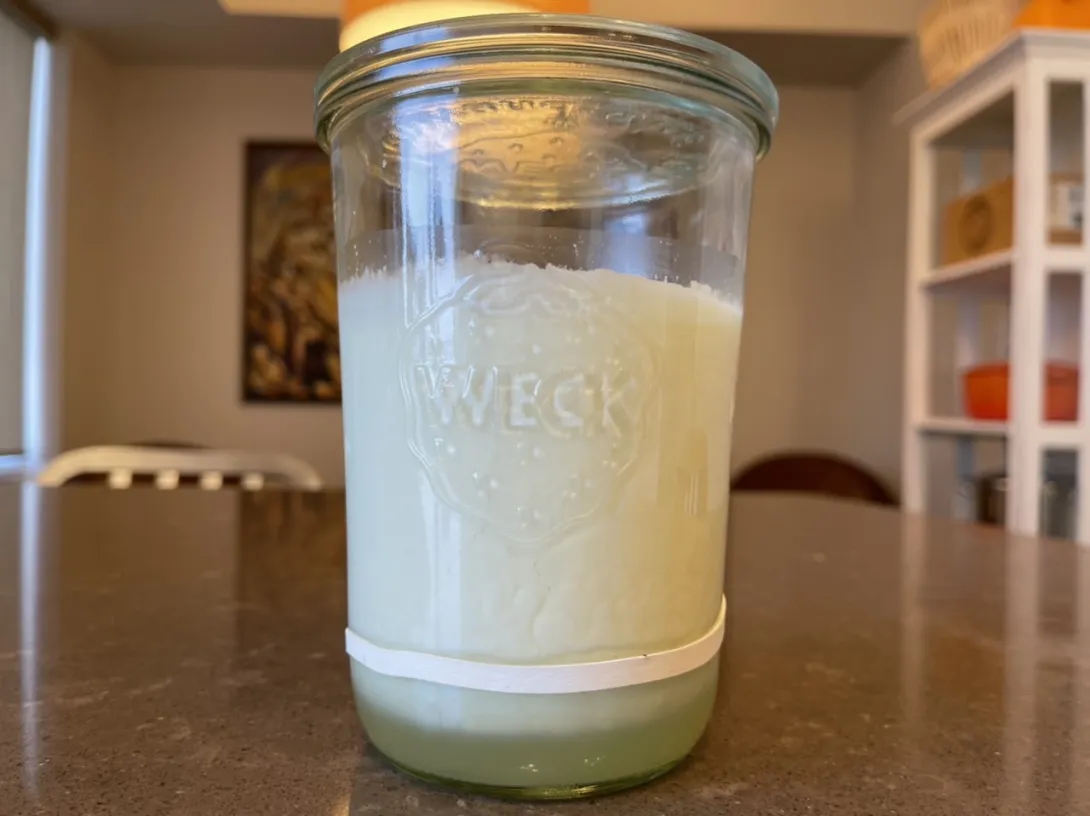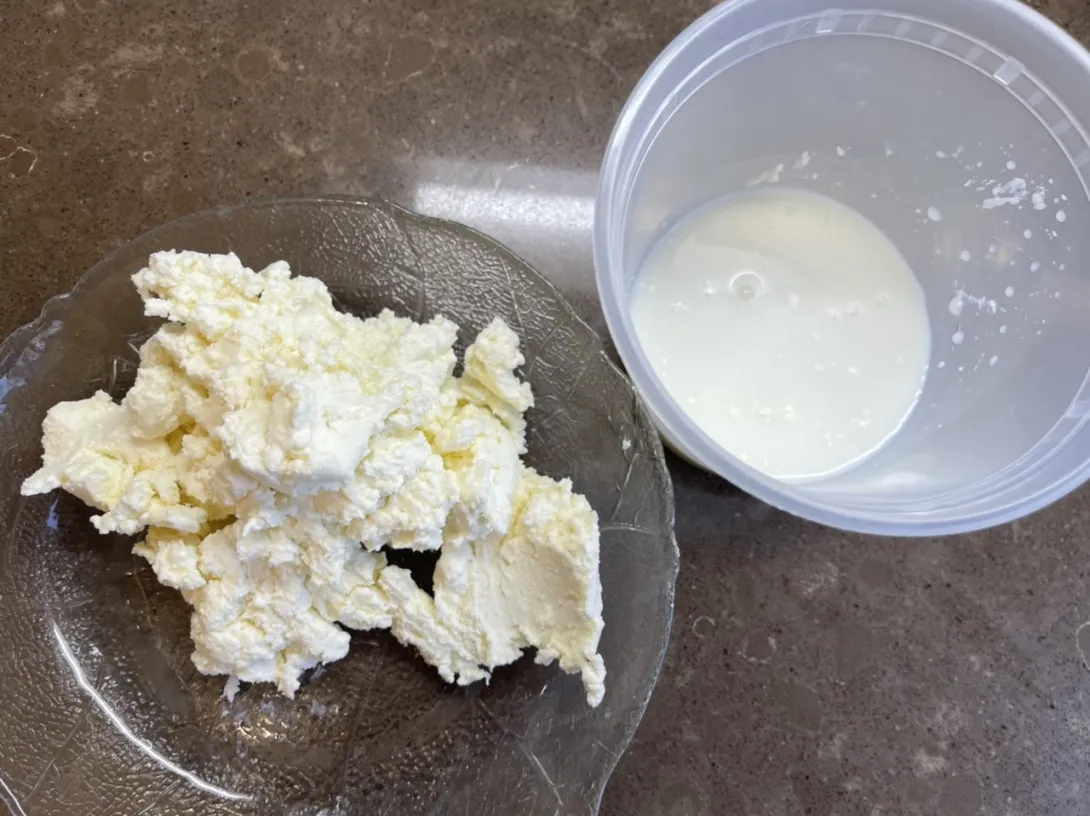I recently dropped into our local sake maker and picked up another package of koji rice. My plan was to make my third batch of homemade miso since our first one is disappearing quickly and the second one is just over a month into its fermentation which will take a fully year or so. However, I borrowed the book Koji Alchemy and have been reading through it and I’m finding it so fascinating and it is giving me some other ideas for my koji rice.
The first thing I decided to try making is amazake. I’d never drank this before but it is popular in Japan. Despite the fact that it is just koji rice, cooked rice and water 1:1:2 it is super sweet and umami. Aspergillus oryzae is the mold that lives in koji rice, and much of it usefulness stems from the massive amounts of both amylases and proteases that it produces. Foods that are fermented by koji rice will be sweeter and more umami rich because of the action of these enzymes. Glutamate is well known as the amino acid that is the primary factor that gives food that umami deliciousness. It is because of the proteases that glutamate is released from foods in large amounts, it is what gives miso and soy sauce that awesome delicious flavour.
Amazake is not fermented so in making it unlike the miso, we are not trying to grow the aspergillus oryzae but instead we are relying on the enzymes already present from the aspergillus in the koji to break down the starch and protein in the rice to make the amazake sweet and yummy. I used my Instant Pot set to Keep Warm, Less placing a couple of inches of water in the pot and then placing the jam jar with the koji rice, cooked rice and water in the water bath. This setting at most stays on for 10 hours, so I had to run it twice, once at 4 hours and once at 10 hours to get the full effect.
This morning I took the jar of amazake out of the Instant Pot and stirred it well to break down the rice and tasted it. It was shocking how sweet it is without any added sugar. Wow such delicious interesting thing this amazake. So the main reason I wanted to make it was to play with the koji rice I had but then I also had a plan for bread of course. I am using this amazake to prepare a Tangzhong for my vegan version of the sourdough Hokkaido milk bread. Because it is so sweet I didn’t need to add any sugar to the dough. So we shall see if the resulting bread it too sweet for my liking. Having tasted it, I wonder how it would work to make a stiff sweet levain!!
I’ll posted about my first test bake with my amazake in another blog post.

- Benito's Blog
- Log in or register to post comments
Sorry about the sideways photo.
The first time I had Amazake I was waiting to ring in the new year at a temple in the countryside. It was so warm and lovely. I highly recommend adding just a bit of grated ginger to it when you drink it. It adds a nice warming spice to the drink and goes well with the sweetness. Great job with all your experiments!
Ginger sounds like a great addition to it, thanks for the suggestion Steven.
Benny
Oh, how nice! I'm waiting for warm weather to start this year's batch of soy sauce. When mixture of soy and wheat is incubating with koji spore there is this pleasant appetizing smell in the house! I'm sure your amazake was lovely and now I'm off to check how your bread turned out 🙂
Thank you Marta, I’m excited to hear that you make your own soy sauce. Using koji is becoming a bit addicting.
I have a few other projects two based off the amazake. I have just inoculated some 35% fat cream with the amazake to make koji cultured cream and I’m hoping that I’ll have koji cultured butter and koji buttermilk at the end of that. If this works well I may use that koji cultured butter and buttermilk to make a sourdough milk bread.
I’m also making a shio koji with the amazake. I’ve never used this before but have read that it makes everything taste better! We shall see if that is the case.
I also recently reactivated my long ignored grape yeast water. I had been in the fridge for the past 1.5 years. I got new grapes, cleaned and sliced in half and inoculated a new grape yeast water with some of the old grape yeast water. It was super active within two days. I’ve just not inoculated a jar of raspberries and water with some of the grape yeast water and I’m hoping that I can produce first raspberry wine and then have it go straight to raspberry vinegar. Again we shall see if that works. I have two jar of a dark rose that I’ve been converting to rose vinegar for the past couple of weeks. I had added unpasteurized apple cider vinegar to it to bring the alcohol down to about 8% and for the bit of vinegar mother in the apple cider vinegar. It seems to be working, I recently tasted it and it certainly is tasting good and it is developing a mother. Now someone on TFL had told me to swirl the vinegar daily so I was doing that but it disturbed the mother. It will be fine, but I’ve stopped swirling and will just let the mother form at the surface of the vinegar.
Lol guess who told you to swirl the vinegar! It was me! I told you to do this, because the first vinegar I made was made if apple scraps, and if you do not swirl it you get a thick layer of kahm and mold. After getting a decent level of acidity you then filter it and don't mix it anymore, just gently swirl the jar itself and when the mother us heavy enough it will just float down to the bottom.
Shio koji is very nice as a salt substitute. I will be making some koji based things when it's warmer. Making soy sauce was very interesting. I was stirring it every day and tasting it. And one day the taste just jumped from being salty and wheaty to deep and umami.
When it's really warm outside I also plan to make some fermented soy paste. It's rather stinky, so I prefer to keep the jar outside on the deck
I don't have enough courage to make miso yet!
Well a thick layer of Kahm would be enough to make me think of preventing it by swirling. Ultimately the mother has to be removed so it can start the next red wine or malt vinegar so it doesn’t matter if it is on the bottom or top.
Considering the things you have made with koji you should have no fear of miso, it was my first koji project and really so easy. You would have no problem with it, you’ve even made soy sauce
I’ve you’re not quite ready to start a new vinegar, are you just storing your vinegar mother in a bit of the vinegar in the fridge Marta?
In winter I just keep it in the cupboard. I put it in the fridge when indoor temperature is at 70°F. It stores perfectly in it's own vinegar
Great that is what I figured but thought I'd ask, thank you Marta.
The koji cultured cream hasn’t worked yet. It should normally take about 24 hours at room temperature but the cream hasn’t thickened or changed in flavour much. I’ve added some more amazake to it and I’ll check it again tomorrow morning. If nothing has happened by then it may be a failed ferment. I wonder if using a sour amazake would be better? None of the things I’ve read specified either sour or sweet amazake, they just say amazake.
I have shio koji fermenting but that won’t be ready for a while as it takes 7d to fully ferment.
In the meantime my amazake cultured cream is ready. Koji Alchemy said that it would be ready in 24 hours or so. Mine took 52 hours and I had to place it in the proofer with the shio koji and doughs yesterday to get it going. It has a milk lactic acid smell and smells like nothing I’ve had before. I’ve never had proper buttermilk nor have I had cultured butter. The book says that it is ready when you can stand a spoon up in it which I could last night but I didn’t want to churn it yet so in it went into the fridge.
This morning I placed it into the stand mixer with the whisk, but because it was already partially separated it didn’t take long to make the butter and buttermilk. Now that I have this, I wonder if I can propagate the buttermilk but just adding milk to it and leaving it out to ferment? I haven’t tasted the butter yet, I’ll put some on toast to try it.
I think I will make a cultured buttermilk bread with this eventually. The amazake is quite amazing the number of things you can make with it for both sweet and savory applications in cooking and baking.
Image

Image

I've read the book section for setting up the Miso fermentation and can't wrap my head around it. It sounds like all it needs is a way to keep the solids below the salt/liquid and a fermentation lock. Since you've made a few, I was hoping you could take a picture of your setup and explain how it works.
How was your butter? Koji buttermilk pancakes?
Here’s the post outlining my simple setup for miso. My setup couldn’t have been easier.
Butter was fine, nothing really special. Buttermilk made very good milk bread. The shio koji in particular was an eye opener. Marinading chicken thighs with the shio koji makes the chicken so much more delicious! Hard to explain, but the proteases breaking down the proteins releasing glutamate the umami amino acid, it really works.